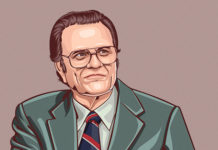At the center of this mission was a shared burden see a marginalized community reached for Christ. John Fischer’s reflection of Stedman-Wise is fairly indicative of the defining quality of these partnerships: they were “not going to turn away anybody who wanted to know about Jesus.”
Unfortunately, this meant often absorbing hits from their own side of the bridge who did not understand the importance of this shared mission. When John Bisagno hosted Richard Hogue for the SPIRENO (Spiritual Revolution Now) meetings where thousands of youth came to Christ, Bisagno told his church he would rather see hippies sitting on the floor in the church singing praises than sitting on a park bench smoking pot. Similar stories of defiant stands flowed out of the interviews for the JPM Oral History project where leaders refused to compromise the mission even when it cost them standing and followers on their own side.
Over time, these relational bridges proved essential to breaking through cultural barriers. Through engaging with one another, fears and caricatures could be displaced by a genuine appreciation of the image bearer. Smith himself regularly told about his initial distaste for the hippies that was overcome through the enduring love of his wife, Kay, and his relationship with Frisbee. Initially hostile, Smith used his own transformation to win his church board and other churches in the community to a shared vision.
At the same time, countercultural leaders took risks of alienating their community by submitting to the teaching of those they were supposed to be resisting. Reflecting on the relationship between Stedman and Wise, John Fischer observed that Stedman who was painfully uncool, reminding him more of a car salesman than a preacher. Yet through enduring, Wise was able to draw young people into the church, his very presence on stage and in leading Bible studies a testimony to the fact that there was space for them just as they were within the community.
Just as critical however was the role established ministers played in the relationship. Perhaps the clearest function was providing theological and practical grounding for their passionate but inexperienced counterparts. Chuck Smith and Ray Stedman’s ability to exegete scripture in clear and simple terms provided young Christians unfamiliar with Bible study a roadmap for taking hold of scripture and young preachers a model for their own ministry.
Learning from the past
On October 7-9, 2021, Biola will host the Ablaze Conference where we will explore the impact and legacy of the Jesus People Movement. I’m excited to consider how God used this movement and to consider what lessons the Church can take away for today.
Yet in considering the legacy of the JPM, a first lesson must be recognizing the rarity of some of its successful stories such as these partnerships. What made them impactful were their exception to broader church culture that was far more common to isolate. In one interview, a JPM leader recounted the more common experience where his ask for help was rejected. Forced to choose between the young hippies in his congregation and his church board, the minister chose the security of the familiar. Alienated, many JPM communities were left to forge their own pathway without any theological and pastoral support.
What makes many of the movement’s defining leaders so memorable 50 years later is not their innovative strategies but how they selflessly and defiantly refused to turn their back on people who needed the gospel and were willing to risk their reputation to involve unusual young people––like hippie preachers––in leadership.
Ed Stetzer is executive director of the Wheaton College Billy Graham Center. His newest book is Christians in the Age of Outrage: How to Bring Our Best When the World Is at Its Worst.











